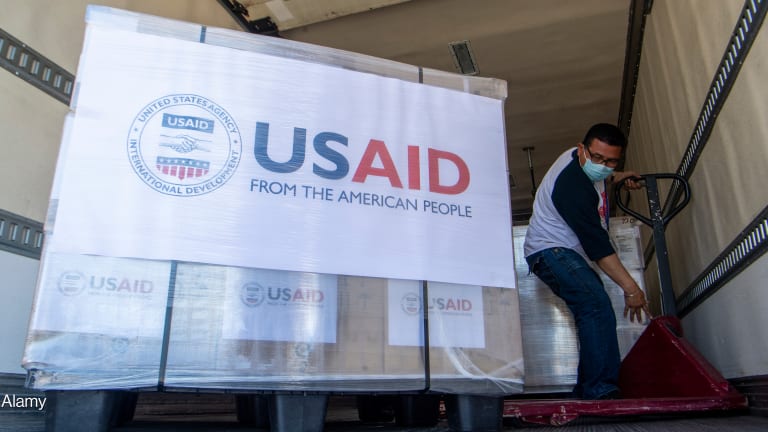
In December, weeks after USAID Administrator Samantha Power announced her new vision for global development, the U.S. Agency for International Development released its new draft policy on Local Capacity Development. This policy represents a major mindset shift in how USAID plans to help strengthen local capacity for achieving local goals.
It’s a welcome effort, but much has to be done to ensure the policy translates into meaningful change. After USAID released its policy, the Movement for Community-led Development, or MCLD, a global network of 75 international NGOs and 1,500 community-based organizations, hosted a consultation on it.
Participants from organizations of all sizes in more than 35 countries largely approved of the direction of the policy, particularly the recognition of existing local capacities, and the shift away from traditional short-term capacity “building” programs. But many had concerns about USAID’s ability to make this profound shift in mindset.
Here are a few key recommendations from the consultation, organized by the policy’s principles.
Principle 1: Start with the local system. There already is a system in every country that people want to strengthen. Therefore, MCLD and participants strongly prefer the title “capacity strengthening” to “capacity development.”
In fact, there are already organizations in each country with the job of capacity strengthening that should be identified and supported. This policy should establish a “local first” principle as to who should do the work of capacity strengthening.
Furthermore, the policy needs to clarify what it means by “local.” We strongly encourage USAID to provide clear guidance on carrying out a ground-up systems analysis based on the principle of subsidiarity — recognizing that institutional capacity closest to the people plays the most important role in meeting development challenges.
When there is true local ownership of capacity strengthening, local groups must be in the driver's seat — full stop.
—Principle 2: Develop diverse capacities through diverse approaches. We applaud the shift away from one size fits all to a tailored approach that includes all relevant local voices and wisdom and recognizes the different types of capacities that may be needed. The recognition of relational capacity in the current policy is a big step forward. Creating and supporting sustained platforms for interaction and engagement where the numerous groups and institutions can synergize their collective visions, capacities, and actions would go a long way in strengthening relationships and aligning the often fragmented capacities that exist in a local system.
Principle 3: Align capacity development with local priorities. This would be a major change from USAID’s previous focus on building capacity to comply with USAID regulations. However, while applying the programmatic lens to capacity development is critical, if USAID doesn’t do something to reduce the burden of its notoriously rigid compliance requirements, they will continue to overwhelm local priorities. The policy could call for the creation of streamlined, user-friendly online systems that would allow even the smallest organization to both meet requirements and define their own capacity strengthening goals.
Principle 4: Appreciate and build on existing capacities. If anything, this should move up to be the first principle of the policy. Community leaders have proven their strength during COVID-19 and are keenly aware of areas where they would like to be even more effective. This principle could be strengthened by an explicit recognition of the power, promise, and potential that exists in every community. The policy uses asset-based terminology but there is a difference between saying we will build on existing capacities and explicitly saying: We know that capacities exist in every community. We will support communities as they strengthen those capacities.
Principle 5: Be mindful of and mitigate the unintended consequences of our capacity development. USAID has priorities linked to funding, and this inevitably distorts local priorities. Its systems analysis must clarify the systemic changes grassroots communities seek to achieve and align its power with nonviolent pathways towards that change. The policy needs to explicitly address gender and other systems of inequality where power dynamics are barriers to ensuring communities are in the driver’s seat.
Principle 6: Practice mutuality with local groups. This wording caused the greatest confusion. What does “mutuality” even mean between community actors and the world’s largest bilateral donor? Certainly, the call for mutual respect and mutual learning makes sense, but when there is true local ownership of capacity strengthening, local groups must be in the driver's seat — full stop.
Furthermore, one clear way to demonstrate mutual respect is relatively easy to implement — USAID works in many areas where English is not an official language. A critical first step when the policy is finalized is to ensure it is available in all major languages. Additionally, we recommend ensuring that future draft policies are available for comment in multiple languages.
Principle 7: Measure performance improvement in collaboration with local groups. Participatory monitoring, evaluation, and learning are very powerful tools for systems change. Administrator Power has stated that “by the end of the decade, 50 percent of our programming … will need to place local communities in the lead to either co-design a project, set priorities, drive implementation, or evaluate the impact of our programs.”
We would remove the word “either” – community ownership is best served when communities take the lead in every one of those steps. When this occurs, USAID will have successfully shifted from playing a “directive” role to being a catalyst for locally led development.
Making it real
The draft policy makes reference to a number of internal processes of USAID required for implementation, but local offices can begin now to regularly seek input from local women’s groups, youth, people living with disabilities, and other marginalized groups, as in the new National Strategy on Gender Equity and Equality. These groups know the challenges they face and have pretty clear ideas on how to solve them. They will know what additional capacities, if any, they would need to accomplish it.
Meanwhile, we as civil society groups also have a role to play. We encourage everyone — from the large U.S.-based development organizations to community-based organizations globally — to review the draft policy by Jan. 31, 2022.









